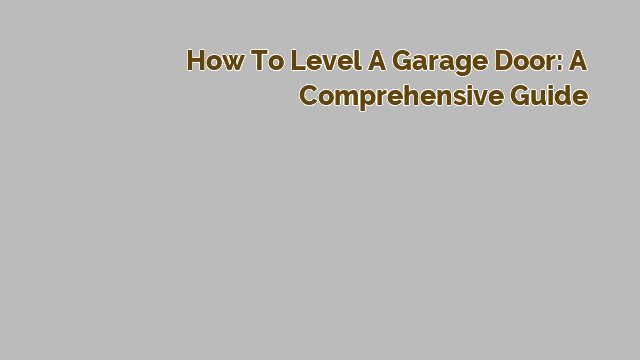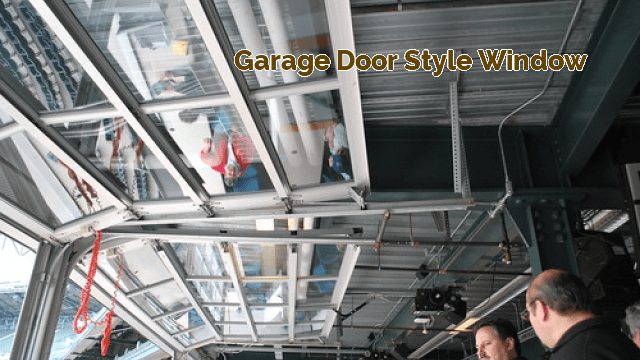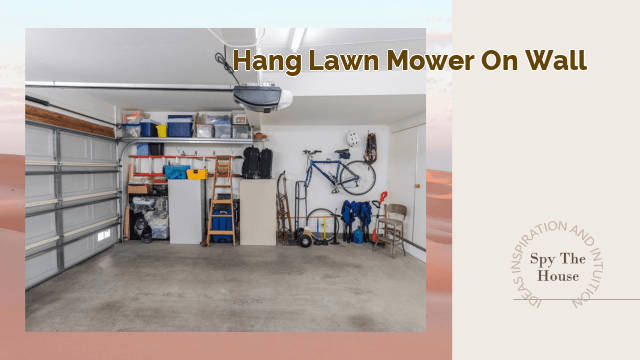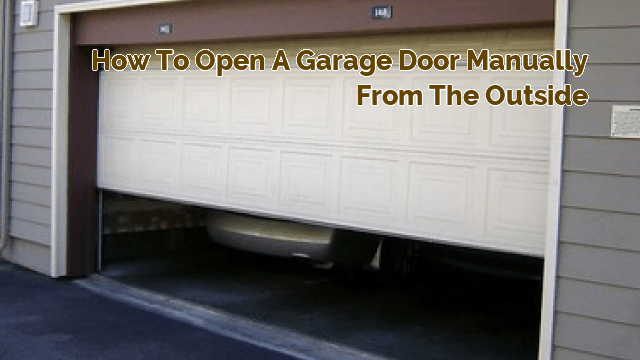How to Level a Garage Door: A Comprehensive Guide
Do you have a garage door that’s not closing properly? Does it look uneven when it’s closed? If yes, then you may need to level your garage door. Leveling a garage door is a process that involves adjusting the door’s springs and tracks to ensure that it opens and closes smoothly. In this comprehensive guide, we’ll show you how to level a garage door step-by-step.
What Does it Mean to Level a Garage Door?
When we talk about leveling a garage door, we refer to the process of ensuring that the door is even and balanced when it’s closed. An uneven garage door can cause several problems, such as:- Difficulty opening or closing the door- Strain on the garage door opener- Damage to the door’s springs and tracks- Noise when opening or closing the doorTo avoid these problems, it’s important to level your garage door regularly.
Tools You Will Need to Level a Garage Door
Before we get started, let’s go over the tools you’ll need to level your garage door. You’ll need:- A ladder- A socket wrench- A level- A marker or pencil- A tape measure
Step-by-Step Guide to Leveling a Garage Door
Follow these steps to level your garage door:
Step 1: Disconnect the Garage Door Opener
Before you start leveling your garage door, disconnect the door opener. This will prevent the door from accidentally opening or closing while you’re working on it.
Step 2: Check the Door’s Balance
The first thing you need to do is check the door’s balance. To do this, close the garage door and disconnect it from the opener. Then, lift the door manually and check if it stays open or closes on its own. If it stays in place, the door is balanced. If it falls, it’s unbalanced.
Step 3: Identify the Problem
If your garage door is unbalanced, you need to identify the problem. The most common causes of an unbalanced garage door are:- Loose or broken springs- Bent tracks- Worn-out rollers
Step 4: Adjust the Tension Springs
If your garage door has tension springs, you can adjust them to level the door. The tension springs are located above the door and are attached to a metal rod that runs through the springs. To adjust the springs, use a socket wrench to turn the adjustment bolt on the end of the rod. Turning the bolt clockwise will increase the tension, and turning it counterclockwise will decrease the tension. Adjust the springs in small increments until the door is level.
Step 5: Adjust the Extension Springs
If your garage door has extension springs, you can adjust them to level the door. Extension springs are located on either side of the door and are attached to the track brackets. To adjust the springs, use a pair of pliers to adjust the S-hook or pulley. Pull the hook or pulley towards the door to increase tension and away from the door to decrease tension. Adjust the springs in small increments until the door is level.
Step 6: Check the Tracks
If adjusting the springs doesn’t level your garage door, check the tracks. Make sure that the tracks are clean and free of debris. Check for dents or bends in the tracks that could be causing the door to be unbalanced. If you notice any damage, use a rubber mallet to gently tap the tracks back into place.
Step 7: Check the Rollers
If your garage door still isn’t level, check the rollers. The rollers are located on the sides of the door and help it move up and down the tracks. Check for worn-out or damaged rollers that could be causing the door to be unbalanced. If you notice any damage, replace the rollers.
Step 8: Lubricate the Moving Parts
Once you’ve adjusted the springs, tracks, and rollers, lubricate the moving parts of the garage door. Use a silicone-based lubricant to lubricate the hinges, springs, and rollers. This will help the door move smoothly and prevent damage to the parts.
Step 9: Reconnect the Garage Door Opener
After you’ve finished leveling your garage door, reconnect the door opener. Test the door to make sure it opens and closes smoothly.
People Also Ask:
How Often Should You Level Your Garage Door?
You should level your garage door at least once a year to prevent it from becoming unbalanced.
Can You Level a Garage Door Yourself?
Yes, you can level a garage door yourself. However, if you’re not comfortable doing it, you should hire a professional to do it for you.
Why Is My Garage Door Still Not Level?
If your garage door is still not level after adjusting the springs, tracks, and rollers, you may need to replace the door or hire a professional to fix it for you.
How Much Does It Cost to Level a Garage Door?
The cost of leveling a garage door varies depending on the extent of the damage and the parts that need to be replaced. It can cost anywhere from $100 to $500.
Conclusion
Leveling a garage door is an essential maintenance task that can prevent a lot of headaches down the road. By following the steps outlined in this guide, you can level your garage door yourself and ensure that it opens and closes smoothly. Remember to always disconnect the door opener before working on the door and to use the right tools for the job. If you’re not comfortable doing it yourself, don’t hesitate to hire a professional.






